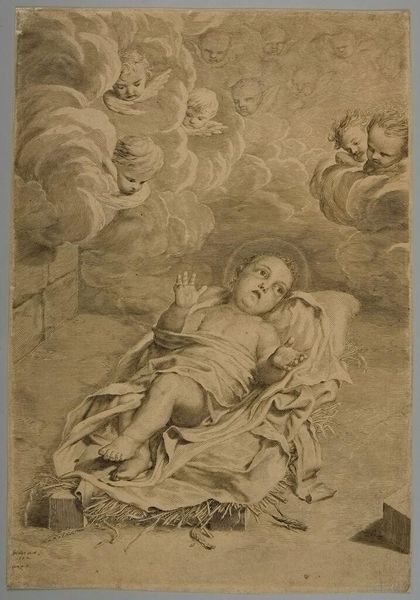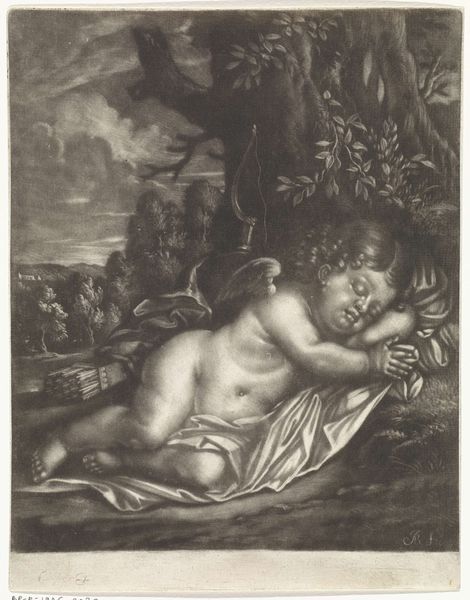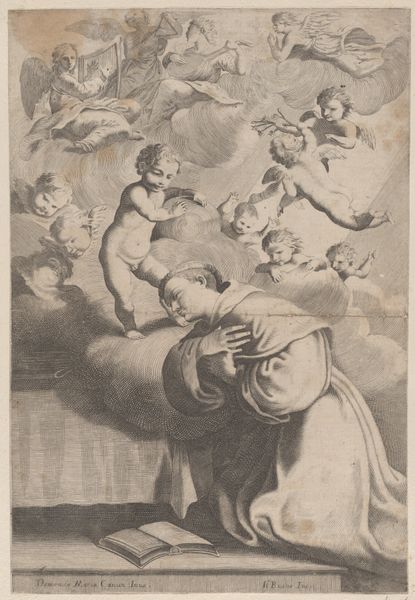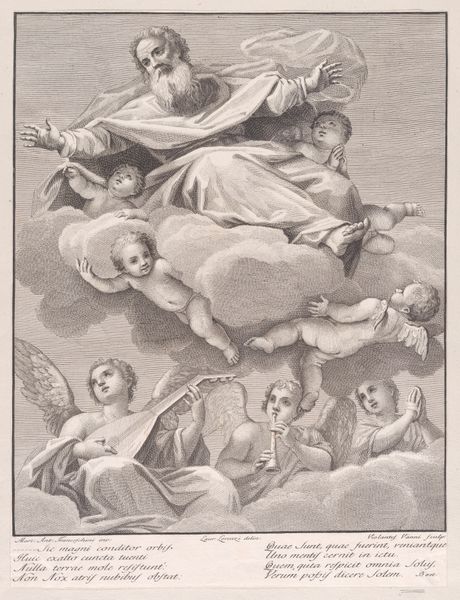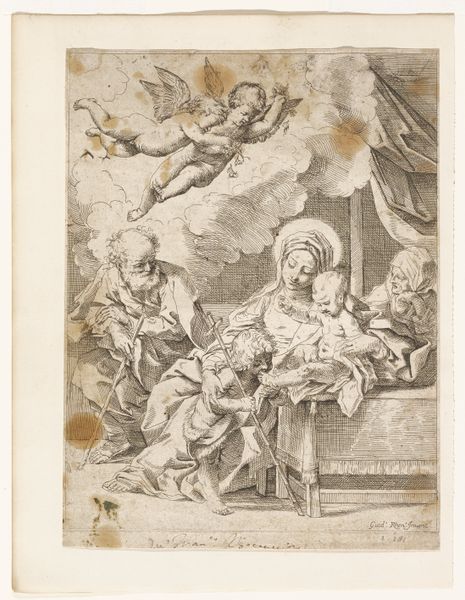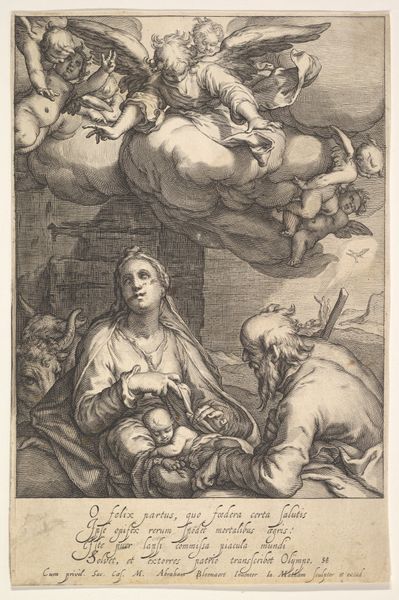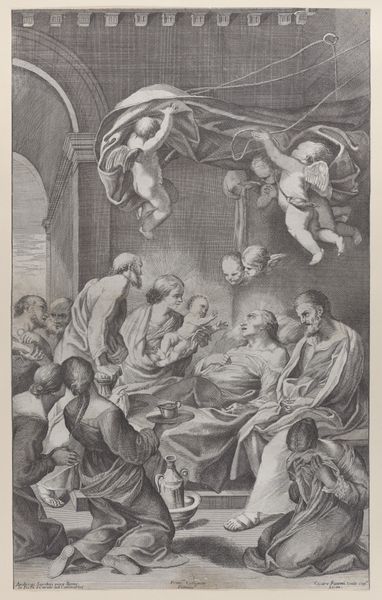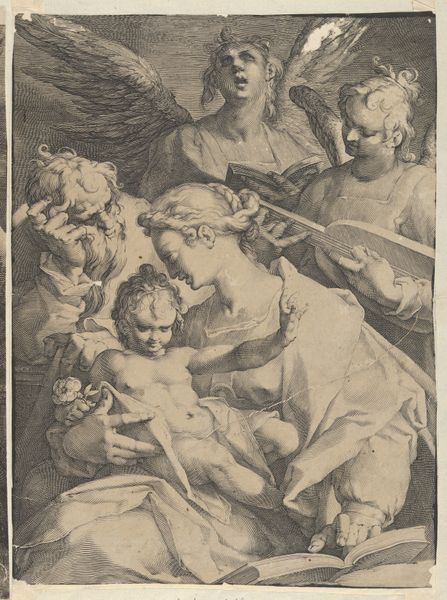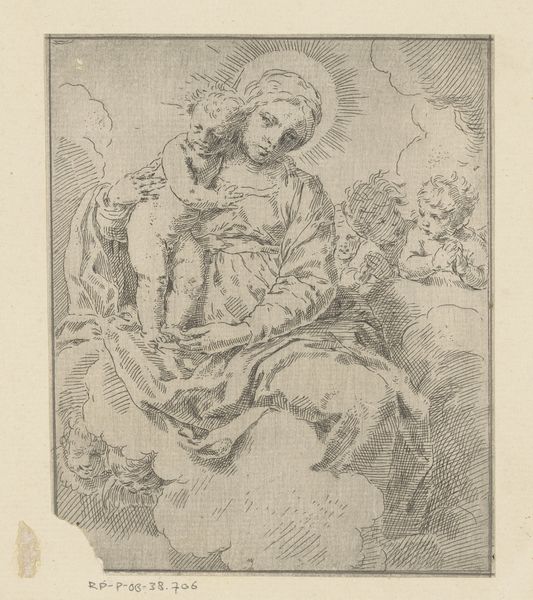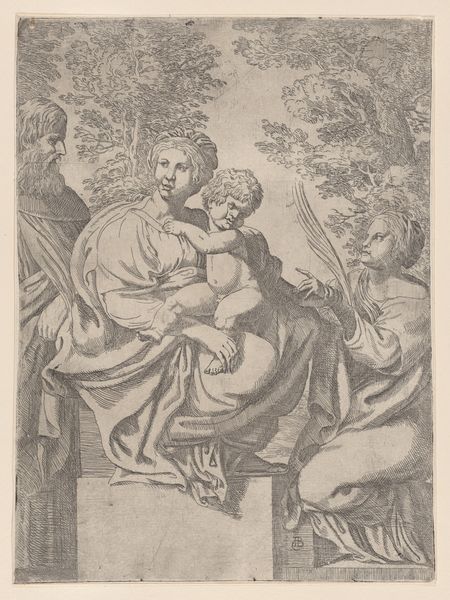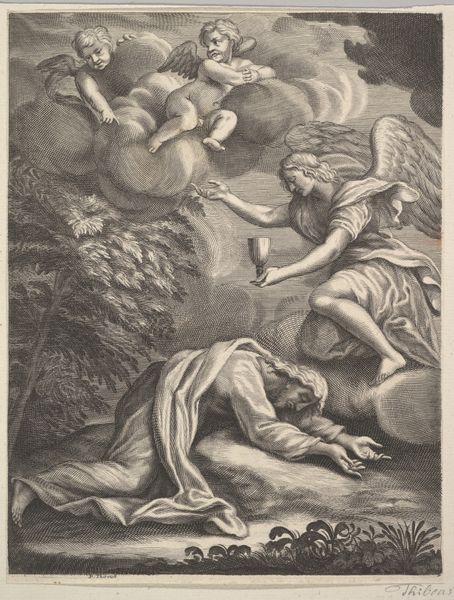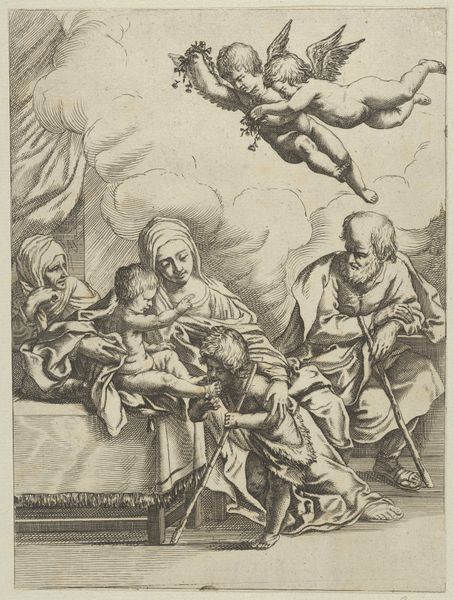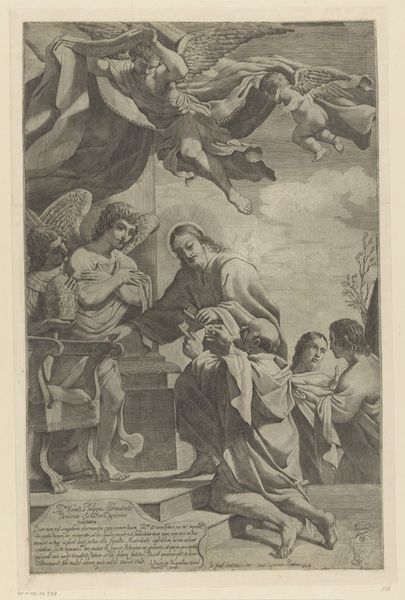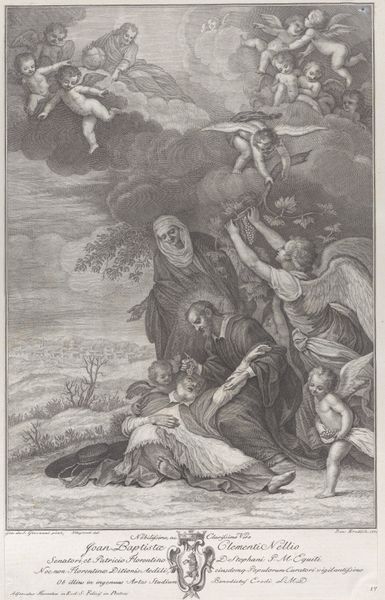
drawing, print, engraving
#
portrait
#
drawing
#
baroque
# print
#
figuration
#
chiaroscuro
#
history-painting
#
engraving
#
miniature
Dimensions: sheet: 17 1/2 x 11 3/8 in. (44.5 x 28.9 cm)
Copyright: Public Domain
Curator: The piece before us is titled "The Christ Child on a Bed of Straw," a baroque engraving made by Claude Mellan in 1662. Editor: The first thing I notice is the textures—the soft folds of the cloth, the roughness of the straw. You can practically feel it. The engraving looks very austere in black and white, with subtle gradations between the tonal extremes. Curator: That's the beauty of Mellan's work. This print embodies themes of light and darkness, very indicative of the 'chiaroscuro' style, and how they interact with the central figure in both a symbolic and literal sense. The contrast dramatizes the scene, with light directed on the Infant as he occupies center stage. Note also the numerous cherubic figures and their symbolic relation to the primary subject. Editor: Absolutely, and look at how those gradations are achieved. We see a complex process here – the meticulous cutting of lines into the copper plate, the inking and printing—it is incredibly labor-intensive. Do you think there was some intentional critique or re-contextualization implicit to a craft production such as this? The luxury market was rapidly expanding in the Baroque Era and printmaking gave new power and significance to artisanal laborers. Curator: Yes, these sorts of engravings were in wide circulation at the time. But back to symbols. Christ depicted as a vulnerable baby highlights his humanity and the sacrifice he is destined to make. Even the straw anticipates his suffering. We are not simply seeing an infant; we are glimpsing a momentous event charged with salvation and earthly misery, all converging in this one individual. The cherubic figures also signify divine approval. Editor: That's well said. And I see it expressed in the physical labor embedded in its creation, so different from the life the work imagines for Christ, though he was the child of a craftsman after all... a potent contradiction for us to contemplate. Curator: A contradiction made material through labor. A valuable way to view religious artwork such as this one. Editor: Indeed. These historical echoes and production concerns truly enrich the work with an earthy flavor.
Comments
No comments
Be the first to comment and join the conversation on the ultimate creative platform.
